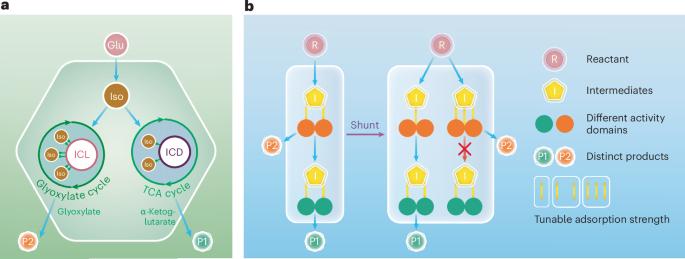通过催化分流高效合成气转化
IF 27.1
1区 环境科学与生态学
Q1 ENVIRONMENTAL SCIENCES
引用次数: 0
摘要
催化合成气转化具有提高化学产品可持续性的潜力。然而,平衡高催化活性和选择性是具有挑战性的,因为跨不同活性位点的中间体之间的复杂相互作用可能引发竞争反应。为了解决这一挑战,我们引入了一种催化分流策略,该策略将多功能催化系统中的中间体重定向,以指导相互依赖的反应途径。这种催化分流策略的关键是调节中间体在不同活性域的吸附。通过调整双功能催化剂中单个原子的Mo-O配位数,我们实现了超过80%的芳烃选择性和超过70%的一氧化碳转化率,芳烃收率超过40%。通过吸收第一个活性区域的中间体,分流途径阻止它们参与后续反应,从而提高甲烷产量,选择性超过93%,一氧化碳转化率超过50%。这种催化分流策略也展示了在生产汽油和轻质烯烃的其他双功能系统中的多功能性。总的来说,这项研究为解决催化合成气转化中的活性-选择性权衡提供了一种可行的方法,消除了阻碍其实际实施的主要障碍。催化合成气转化是可持续化工生产的重要组成部分,但受到转化活性和产物选择性之间权衡的阻碍。在这里,作者通过开发催化分流策略来解决这一挑战。本文章由计算机程序翻译,如有差异,请以英文原文为准。

Efficient syngas conversion via catalytic shunt
Catalytic syngas conversion has the potential to improve the sustainability of chemical products. However, balancing high catalytic activity with selectivity is challenging because the complex interactions among intermediates across various active sites can trigger competing reactions. To address this challenge, we introduce a catalytic shunt strategy that redirects intermediates in a multifunctional catalytic system to guide interdependent reaction pathways. The key to this catalytic shunt strategy is modulating the adsorption of the intermediates across different activity domains. By tuning Mo–O coordination numbers of single atoms in a bifunctional catalyst, we achieve over 80% selectivity for aromatics and a carbon monoxide conversion surpassing 70%, with aromatics yields of over 40%. By absorbing the intermediates on the first activity domain, the shunt pathway prevents their participation in subsequent reactions, thereby boosting methane production with selectivity above 93% and carbon monoxide conversion exceeding 50%. This catalytic shunt strategy also showcases versatility across other bifunctional systems for producing gasoline and light olefins. Overall, this study provides a viable approach for tackling the activity–selectivity trade-off in catalytic syngas conversion, removing a major barrier preventing its practical implementation. Catalytic syngas conversion is an essential part of sustainable chemical production but is hindered by the trade-off between conversion activity and product selectivity. Here the authors address this challenge by developing a catalytic shunt strategy.
求助全文
通过发布文献求助,成功后即可免费获取论文全文。
去求助
来源期刊

Nature Sustainability
Energy-Renewable Energy, Sustainability and the Environment
CiteScore
41.90
自引率
1.10%
发文量
159
期刊介绍:
Nature Sustainability aims to facilitate cross-disciplinary dialogues and bring together research fields that contribute to understanding how we organize our lives in a finite world and the impacts of our actions.
Nature Sustainability will not only publish fundamental research but also significant investigations into policies and solutions for ensuring human well-being now and in the future.Its ultimate goal is to address the greatest challenges of our time.
 求助内容:
求助内容: 应助结果提醒方式:
应助结果提醒方式:


